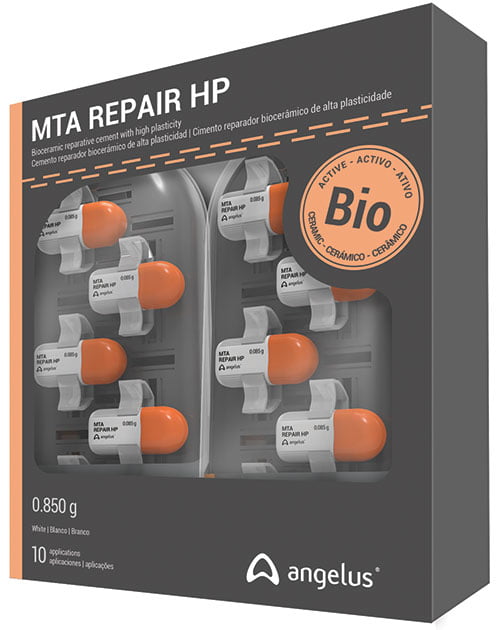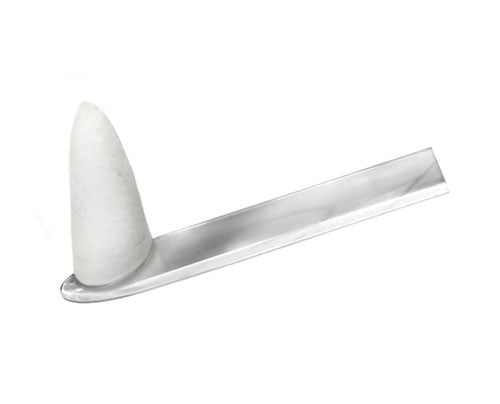Endodontics has had important achievements in recent decades. Equipment for this specialty is increasingly sophisticated, providing every day safer, more accurate, and predictable procedures. However, the technology focused on this area does not apply only to equipment and instruments. One of the great findings of dentistry was MTA — aggregated mineral trioxide, a silicate-based sealant.
Known as the “Miracle of Endodontics,” MTA emerged in the 1990s, and from 2002, Angelus, a Brazilian company focused on innovation for the dental market, developed and began to manufacture MTA Angelus. Since then, the product has been acknowledged by the market. There are many scientific studies that prove the effectiveness of this material highly compatible with the human body. MTA’s ability to form mineralized tissue can be attributed to its sealing capacity, alkalinity, biocompatibility, or other properties associated with it. It can be successfully applied in several clinical situations such as perforations, root resorptions, and paraendodontic surgeries.
Professor Leandro Pereira, Master and Doctor in Pharmacology, Anesthesiology, and Drug Therapy at FOP-UNICAMP, mentions that he had his first contact with MTA in the 1990s and subsequently, due to its geographic location, Campinas/SP-Brazil, started working with MTA Angelus. Pereira says, “In every follow-up of cases treated with this material, it was possible to see the clinical and radiographic response with the desired tissue repair even in complex cases.”
 However, even with so many advantages, an issue bothered the endodontists: manipulating the material. “Its sandy consistency hampers the clinical activity,” reports Pereira, “but just as the evolution of endodontics as a whole, these sealants have also evolved.” To improve this feature, Angelus has developed a new formulation called MTA Repair HP — “High Plasticity.”
However, even with so many advantages, an issue bothered the endodontists: manipulating the material. “Its sandy consistency hampers the clinical activity,” reports Pereira, “but just as the evolution of endodontics as a whole, these sealants have also evolved.” To improve this feature, Angelus has developed a new formulation called MTA Repair HP — “High Plasticity.”
MTA Repair HP is an endodontic bio-ceramic reparative sealant of high plasticity, composed of mineral oxides in the form of thin particles. This new formula keeps all chemical and biological properties of the original MTA, ensuring the success of the treatment. The main change is in its physical manipulation properties as an organic plasticizer was added to the liquid that forms the material. The result is a product with greater plasticity — facilitating manipulation, and insertion in the dental cavity.
Moreover, another innovation has been well received by those who already work with MTA Repair HP. Calcium tungstate (CaWO4) replaced bismuth oxide as a radiopacifier in the formula, ensuring high opacity without changing the color or causing any stains on the patient’s tooth.
Pereira is very well-known in endodontics and was one of the first professionals to have access to the new MTA. “After the first use of MTA-HP, I’ve made it as my newest material of choice for cases of root perforations and retro-fillings. Its radiopacity is excellent, and it is possible to observe it very clearly radiographically. This material is now an integral part of the endodontics I’ve been practicing.”
This information was provided by Angelus.
Stay Relevant With Endodontic Practice US
Join our email list for CE courses and webinars, articles and more..


